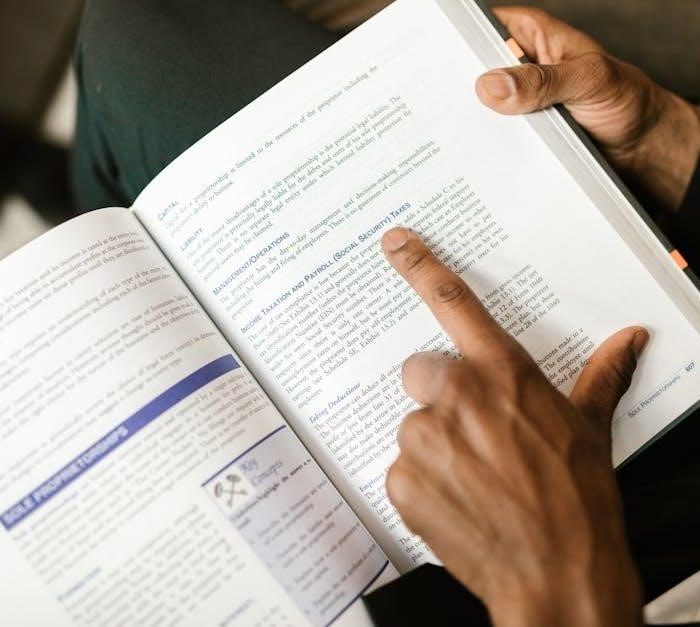Mens dress shirt sizing is essential for a polished look. Proper fit enhances confidence and style. Key measurements include neck, chest, and sleeve length. Accuracy ensures comfort and elegance.
Understanding the Basics of Dress Shirt Sizing
Dress shirt sizing focuses on neck, chest, and sleeve measurements. Accurate sizing ensures comfort and a tailored appearance. Measure your neck for collar fit, chest for button placement, and sleeves for length. Proper fit avoids tightness or looseness, enhancing both style and confidence.
Why Proper Fit is Essential
A well-fitted dress shirt boosts confidence and professionalism. It ensures comfort and unrestricted movement, while a poor fit can look sloppy or restrictive. Proper sizing enhances style, making you appear polished and put-together. A good fit also complements other wardrobe pieces, creating a cohesive look that reflects attention to detail and personal style.

Key Measurements for Sizing
Accurate measurements of neck, chest, sleeve length, and body length are crucial for a perfect fit. These dimensions ensure comfort, style, and proper proportions in a dress shirt.
Neck Measurement
The neck measurement is the first step in determining shirt size. Use a flexible tape measure around the base of the neck, just above the Adam’s apple. Ensure the tape is level and not too tight. Leave enough space for two fingers to fit comfortably. Accurate neck measurement ensures a comfortable and proper fit. Incorrect sizing can lead to discomfort or a less polished appearance. This measurement is crucial for both style and functionality, as it directly affects the shirt’s collar fit and overall appearance.
Chest Measurement
The chest measurement is taken around the widest part of the torso, keeping the tape measure level and parallel to the floor. Ensure the tape is snug but not tight, with arms relaxed at your sides. This measurement helps determine the shirt’s comfort and fit around the body. Accurate sizing ensures the shirt isn’t too tight or overly loose, promoting both comfort and style.
Sleeve Length Measurement
Sleeve length is measured from the center of the back neck, over the shoulder, and down to the wrist. Ensure the tape is level and the arm is relaxed. Proper sleeve length ensures the cuff sits correctly, avoiding a look that’s too short or overly long. Accuracy is key for a tailored fit and balanced style.
Body Length Measurement
Body length is measured from the base of the neck, down the spine, to the hip. Ensure the shirt covers the trousers fully without excess fabric. Proper length ensures a balanced look, avoiding a too-short or overly long appearance. This measurement is crucial for a professional and polished fit, complementing other key measurements.

Types of Fits
Dress shirts come in slim, regular, and relaxed fits. Each caters to different body types and preferences, ensuring a tailored look that balances comfort and style perfectly.
Slim Fit
The slim fit dress shirt is designed for a modern, tailored look. It features a narrower shoulder, tapered sleeves, and a fitted waist. Ideal for slimmer builds or those seeking a contemporary style.
This fit minimizes excess fabric, creating a sleek appearance. It’s perfect for men with lean physiques or those who prefer a fashion-forward aesthetic without sacrificing comfort or mobility.
Regular Fit
The regular fit dress shirt offers a classic, timeless style. It is slightly roomier than the slim fit, providing comfort for men with average builds or those who prefer a relaxed yet tailored appearance.
This fit is ideal for everyday wear, balancing ease of movement with a polished look. It suits various body types and is versatile for both formal and casual settings.
Relaxed Fit
The relaxed fit dress shirt offers a looser, more comfortable silhouette. It is designed for men who prefer a casual, laid-back style with ample room in the chest and sleeves. This fit is ideal for those seeking maximum comfort without sacrificing style, making it perfect for everyday wear or less formal occasions.

Importance of Fabric and Quality
Fabric and quality significantly impact comfort, durability, and appearance. High-thread-count cotton ensures a soft, breathable texture, while proper weave enhances longevity. Superior materials elevate both style and functionality.
Common Fabrics Used
Cotton is the most popular fabric for men’s dress shirts due to its breathability and softness. Twill and linen are also favored for their unique textures. Oxford cloth, a type of cotton weave, is widely used for its durability. Less common options like bamboo and flannel offer eco-friendly and seasonal alternatives. Fabric choice impacts both comfort and style.
Thread Count and Weave
Thread count measures fabric quality, with higher counts indicating softer, more durable shirts. Common weaves include broadcloth, twill, and oxford. Broadcloth offers a smooth texture, while twill features a diagonal rib. Oxford weave is sturdy and versatile, making it ideal for everyday wear. The combination of thread count and weave determines comfort, appearance, and longevity of the fabric.
Role of Accessories
Accessories like cufflinks and collars enhance a shirt’s style, adding a personal touch. They complement the fit and fabric, elevating the overall look for a polished appearance.
Cufflinks and Buttons
Cufflinks and buttons add a personal touch to a dress shirt. They complement the fabric and fit, enhancing the overall style. Choose designs that match your shirt’s aesthetic for a polished look. Buttons, while functional, also contribute to the shirt’s visual appeal, ensuring a cohesive and elegant appearance. This detail elevates the shirt’s sophistication and personalization.
Collar Styles
Collar styles significantly impact a dress shirt’s appearance. Point collars are classic and versatile, while spread collars offer a modern, wider look. Button-down collars add a casual touch with button-fastened tips. Each style complements different face shapes and personal preferences, ensuring a tailored fit and polished look that enhances overall sophistication and individuality in men’s fashion.

Care and Maintenance
Proper washing, ironing, and storage extend shirt life. Wash inside out, avoid bleach, and iron while slightly damp. Store on hangers to maintain shape and quality.
Washing and Ironing Tips
Wash dress shirts inside out in cold water using mild detergent to preserve color and fabric. Avoid bleach and fabric softeners. Iron while slightly damp on a cotton setting, starting with the collar. For stubborn wrinkles, use steam. Always iron inside out to prevent shine. Proper care maintains the shirt’s quality and appearance.
Storage Advice
Store dress shirts in a cool, dry place to prevent fading and moisture damage. Hang them on wide-shoulder hangers to maintain shape and avoid wrinkles. Avoid plastic bags, as they trap moisture. Use breathable cloth bags instead. Folded shirts can be stored in drawers, but hanging is preferable. Keep them away from direct sunlight to preserve color and fabric integrity.
Common Sizing Mistakes
Incorrect measurements and assuming consistency across brands are frequent errors. Proper fit ensures comfort and style, so accurate sizing is crucial for a polished appearance;
Measuring Errors
Measuring errors often occur with chest, neck, and sleeve lengths. Incorrect chest measurements can lead to a too-tight or too-loose fit. Neck sizing should allow two fingers of space for comfort. Sleeve length must match arm length precisely. Proper measurement ensures a perfect fit, avoiding discomfort and unflattering appearance. Accurate sizing is key to a polished look.
Assuming Size Consistency Across Brands
Assuming size consistency across brands is a common mistake. Sizing varies between brands due to differences in fit styles and measurement standards. Always check the specific brand’s sizing chart, as a medium in one brand may not fit the same in another. This ensures a proper fit tailored to your body type and preferences.

Popular Styles and Features
Popular styles include Oxford shirts, known for versatility, and tailored fits like slim and regular. Features vary, with collar types and cuff styles offering customization to suit individual tastes.
Collar Types
Collar types vary, offering distinct styles. The point collar is classic and versatile, while the spread collar suits broader faces. Button-down collars add a casual touch, and club collars provide a rounded, unique look. Each style complements different physiques and occasions, ensuring a personalized fit and aesthetic appeal in dress shirts.
Cuff Styles
Cuff styles enhance shirt functionality and aesthetics. Barrel cuffs are standard, with one or two buttons. French cuffs are formal, requiring cufflinks. Button cuffs resemble French cuffs but are less formal. Convertible cuffs offer versatility, accommodating both buttons and cufflinks, catering to varied preferences and occasions with style and practicality.

Choosing the Right Brand
Choosing the right brand involves researching reputation and reading reviews. Trusted brands ensure quality, fit, and durability, making your purchase worthwhile and enhancing your wardrobe.
Reputation and Reviews
Reputation and reviews are crucial when selecting a brand. Trusted brands with positive feedback ensure consistent sizing, quality, and fit. Reading reviews helps verify customer satisfaction and reliability. Prioritize brands known for excellence in craftsmanship and sizing accuracy to ensure your dress shirt meets your expectations and needs.
Brand Sizing Charts
Brand sizing charts are essential tools for determining your dress shirt size accurately. Each brand’s chart offers specific measurements to ensure the best fit. Referencing these charts helps avoid sizing errors and ensures accuracy. They are typically found on the brand’s website or product pages, making it easy to select the right size confidently.
A well-fitting dress shirt enhances confidence and style. Proper measurements ensure comfort and elegance. Refer to sizing charts and guides for the perfect fit every time.
Final Tips for the Perfect Fit
- Always get professionally measured for accuracy.
- Use a sewing tape to ensure precise neck and chest measurements.
- Allow two fingers under the collar for a comfortable fit.
- Avoid shirts too tight or loose; aim for a balanced silhouette.
- Consider personal style and body type when choosing fit.
- Check brand sizing charts, as sizes may vary.



